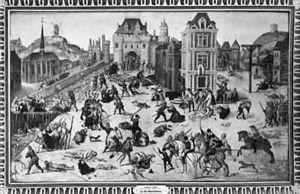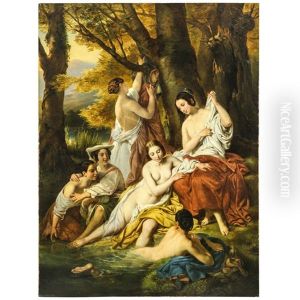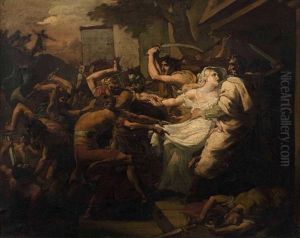Francois Dubois Paintings
Francois Dubois was a French Huguenot painter born in Amiens in 1529. He is best known for his depiction of the St. Bartholomew's Day Massacre, a significant event in the French Wars of Religion. Dubois, who was a Protestant, experienced the religious conflict first-hand, which had a profound impact on his work.
Despite the fact that much of Dubois’ early life is shrouded in mystery, it is known that he was active during a period of great religious turmoil in France. The St. Bartholomew's Day Massacre, which occurred in 1572, was a targeted group of assassinations, followed by a wave of Catholic mob violence, directed against the Huguenots (French Calvinist Protestants). Dubois' most famous painting, 'The Massacre of St. Bartholomew', vividly captures the violence and horror of this event. The painting is notable for its detailed portrayal of the atrocities and serves as an important historical record of the events that took place.
After the massacre, Dubois fled to Geneva, Switzerland, where he became associated with John Calvin’s community of Protestant refugees. There, he continued to work, receiving commissions from the local community. His works from this period reflect the Calvinist iconoclasm of the time, which was a response to the Catholic Church’s use of religious images.
Francois Dubois’ artworks are characterized by their detailed narrative style. He had a talent for capturing the emotion and drama of the scenes he depicted, often focusing on religious and historical subjects. His other works are less well-known than his depiction of the St. Bartholomew's Day Massacre but continue to provide insight into the religious conflicts of the 16th century.
The exact details surrounding Dubois’ death are not well-documented, but it is generally accepted that he died in Geneva in 1584. His legacy is largely tied to his role as a witness to religious violence through his art, offering future generations a window into the past and the profound effects that religious conflict had on the society of his time.





















